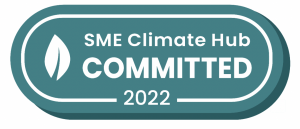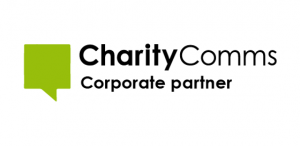This year, communications professionals across sectors have begun paying more attention to their email marketing lists than ever before. No prizes for guessing the big four lettered reason why (GDPR – or was that PECR?).
Although only one of many strategies for achieving compliance (and not one everybody agrees is legal) many organisations we talked to have been undertaking ‘re-permissioning’ exercises, essentially asking their entire lists to consent again to receiving marketing.
For most of us, this is unchartered territory. So what should we be aiming for? And how do we know if we’ve done well?
While there are no hard and fast benchmarks for GDPR opt-in rates, there are a few ways you can work out a benchmark for your own organisation and decide on a target that your team agrees with. Or see how your re-permissioning exercise performed in retrospect.
In this article:
1. Use your existing open rates as an indicator
Many of the people we have spoken to who have already carried out re-permissioning in recent months have suggested open rates are a good indicator of how many people will opt-in. After all, it’s fair to presume if someone is opening your emails, they would be interested in continuing to hear from you in future.
So as a first step, finding out what your average open rate for email marketing is, will give you a good idea of what you should be aiming for.
We would recommend taking an average of the past 12 months of open rates will give you a good idea of your audience’s current behaviour.
2. Conversions as an indicator
There is an argument that a re-permissioning exercise is just like any other action based email campaign. Usually, many more people will open an email than ultimately complete your call to action, therefore using an open rate may give you an unrealistically high number.
Have you run any action based email campaigns over the past 12 months? Check how they have performed.
3. A mixture of both
The realistic outcome might be somewhere in between your average open rate, and your typical conversion rate.
On the one hand, most people are not being asked to do anything new, it’s an easy ask – sticking with the status quo. On the other, you are bound to lose some people on the journey from open to full conversion.
4. Be vague: Say 20 – 45%
Every audience is different but the empower team are part of several groups that have been willing to share their GDPR opt-in rates:
“Our previous open rates varied a lot with subject – between 25% and 60%, with the top end being really urgent stuff or when we had a job going! On our first two opt-in campaigns, it was 31% opting in, then 22% (with respondents to first campaign excluded from second) so the numbers all add up sensibly enough.”
“Our opt-in rate has been maybe 25% tops to date.”
“We’ve had a 35% opt-in rate so far. We’re pretty chuffed with that as we know we’ve got a lot of old data on the system so we’re viewing this more as a data cleansing exercise.
Cancer Research UK, typically considered the ‘gold standard’ in charity communications, revealed their GDPR opt-in rates to Civil Society magazine, with 80% of their supporters opting out of mail, 55% opting out of email and 90%+ opting out of phone calls.
Similarly, we’re finding that both clients and other email marketing professionals we’ve heard from, most organisations saw a 20-25% opt-in rate from their email lists ahead of the GDPR deadline, which is largely in line with their email open rates.
Finally, look on the bright side
Losing 55-80% of your email contacts may seem like terrible news. But look at this as a data cleansing exercise and you might feel better:
- If you’re on a pay-per-email plan, you’re going to save money sending emails to fewer contacts who were never going to engage with your emails anyway.
- Your average open rate should improve once you have cleaned the list, as you’ll have a list of truly engaged, warm supporters or leads.
- This means :
- more accurate insights into your supporter base’ behaviour and demographics;
- and a higher sender reputation and better delivery rate!
Cancer Research UK, sore from losing 55% of their contacts and potentially millions of pounds in future donations, said it was “the right thing to do” and “fostered a culture of innovation” in the organisation.
One of the people we spoke to also sounded cheery:
“[Since we cleaned our list] the open rate and click rate on subsequent marketing emails is through the roof – so we have a smaller but far more engaged audience, which I think is a win!”
What about your organisation? Have you undertaken a re-permissioning campaign? What have you set your GDPR opt-in benchmark rate at? Any other tips on how to calculate your opt-in rate?




